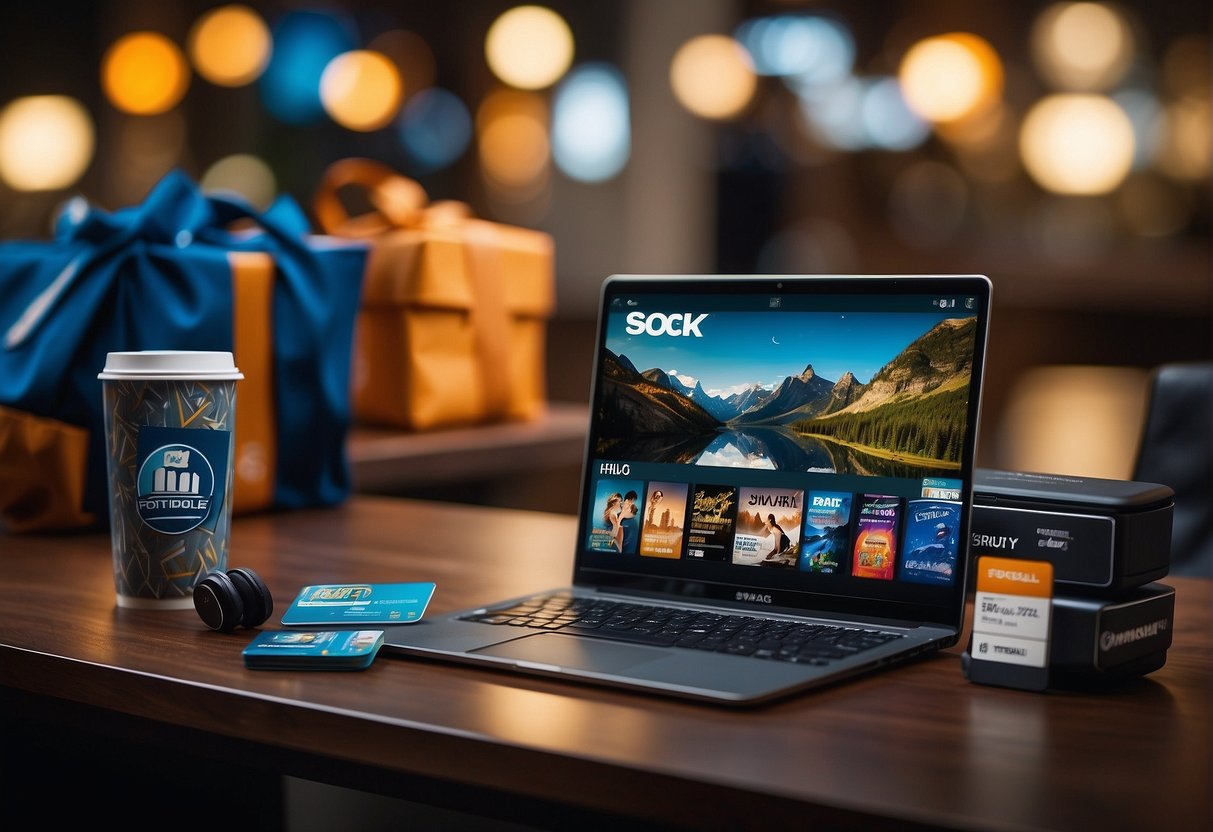Engaging employees in the workplace goes beyond just offering a paycheck; it’s about fostering a culture where their ideas and involvement are valued and encouraged. Employee engagement activities are designed to improve participation, enthusiasm, and loyalty among staff members. These activities help in building a work environment where employees feel heard, valued, and integral to the organization’s success.
When you incorporate effective engagement activities, you not only enhance productivity but also ignite creativity and innovation within your team. From brainstorming sessions on internal social media platforms to structured team-building exercises, the aim is to create channels through which employees can contribute meaningfully to the organization’s objectives.
It’s crucial to tailor these activities to match the ethos of your company and to resonate with your employees’ needs and aspirations. Whether it involves group problem-solving challenges, opportunities for personal development, or platforms for multi-vocal dialogues, each activity should reinforce the message that every employee’s contribution is a vital piece to the corporate puzzle.
Understanding Employee Engagement
Before diving into specific strategies, it’s critical to grasp what employee engagement truly entails and why it’s imperative for the thriving of your organization.
Defining Employee Engagement
Employee engagement is the emotional commitment you have towards your company and its goals. This doesn’t merely signify contentment or job satisfaction, but instead, it’s about being psychologically invested in your organization’s vision and putting discretionary effort into your work. Engaged employees are not just working for a paycheck or the next promotion, but work on behalf of the company’s interests, leading to higher productivity and innovation.
Importance of Engagement in the Workplace
Your engagement level in the workplace has a direct correlation with turnover rates and retention. A robust work environment where your voice is heard can significantly boost your sense of belonging and loyalty to the company. When you feel engaged, you are more likely to stay committed to your organization, which reduces the costs and disruption of turnover. Additionally, high employee engagement is often indicative of strong company culture, and it can become a key competitive differentiator in attracting top talent.
Strategic Framework for Engagement Activities

To drive meaningful engagement, your activities must align with the overarching strategic goals of the company and reflect your core values and culture. Thoughtfully designed engagement initiatives can enhance your leadership’s connection with employees, reinforce your corporate culture, and improve retention.
Aligning Activities with Company Goals
When developing employee engagement activities, it is crucial to ensure they are in lockstep with your company’s strategic objectives. Leadership should communicate clear goals and explain how each activity contributes to these targets. For instance:
- If your goal is to increase innovation, consider hackathons that encourage creative problem-solving.
- Should your focus be on customer satisfaction, implement recognition programs that reward exceptional customer service.
This alignment helps employees see the value of their contributions and understand their role in the company’s success.
Incorporating Company Values and Culture
Your company culture is the bedrock of employee engagement best practices. Activities should not only be fun but must also embody your organization’s values:
- Team-building exercises that emphasize collaboration can reflect a culture valuing teamwork.
- Volunteer days resonate with companies that prioritize community involvement and social responsibility.
By weaving your values into the fabric of engagement activities, you nurture a corporate culture that supports lasting retention and a sense of belonging among your team members.
Designing Effective Engagement Programs

Creating engaging programs in your workplace hinges on understanding your employees’ needs and fostering an inclusive environment. It requires a strategic approach that incorporates continuous feedback and celebrates diversity.
Feedback Mechanisms and Continuous Improvement
Develop a robust feedback system where employees can share their opinions and ideas without fear of negative repercussions. Encourage continuous improvement through:
- Regular employee surveys: Conduct surveys that gauge job satisfaction and engagement levels.
- Open communication channels: Establish forums for discussions that strengthen transparency and trust.
Implementing these mechanisms not only prompts constructive exchanges but also conveys that you value your employees’ input, enhancing their commitment to the organization.
Diversity and Inclusive Engagement Activities
To foster diversity and inclusivity, you should:
- Design activities that represent various cultures and backgrounds, making every team member feel included.
- Ensure equal opportunities for all to participate in decision-making processes.
This approach to engagement empowers all employees, driving innovation and creating a more cohesive team.
By focusing on these key elements, you create a workplace where every employee feels heard and valued, paving the way for a vibrant and productive organization.
Recognition and Appreciation Strategies

Recognition and appreciation are pivotal in fostering a workplace where employees feel valued and motivated. By implementing thoughtfully crafted recognition strategies, you not only enhance performance but also bolster job satisfaction.
Creating a Culture of Recognition
To create a culture of recognition, it’s essential to integrate appreciation into your daily operations. Start by publicly acknowledging your team’s efforts and successes during meetings. Encourage leaders and peers alike to participate in offering praise. Establish regular recognition events like ‘Employee of the Month‘ awards or ‘Shout-Out Fridays’, which can be a fun and inclusive way to highlight individual and team achievements.
Personalized Recognition Initiatives
Personalized recognition initiatives can have a profound impact on employee morale. Take the time to learn about your employees’ personal interests and career goals. Celebrate personal milestones, such as work anniversaries or completed training programs, with tailored rewards. These could include extra time off, vouchers for courses related to their hobbies, or even simple handwritten notes expressing appreciation for their dedication. Remember, social recognition, like praising someone’s contribution on a company-wide platform, can also boost an employee’s visibility and sense of belonging.
Growth and Development Opportunities

Providing growth and development opportunities is a crucial strategy to enhance your employee engagement. By investing in your employees’ professional growth, you demonstrate a commitment to their future within the company, which can increase their loyalty and productivity.
Professional Development and Training Programs
Invest in robust professional development and training programs that go beyond the basic job description. Tailor these programs to the specific needs of your employees to ensure they are acquiring relevant skills that will contribute to their personal and professional growth within your organization. For instance:
- Structured Learning: Offer courses that cover advanced industry knowledge or technical training to keep your team ahead of the curve.
- Soft Skills Enhancement: Provide workshops that develop communication, leadership, and problem-solving abilities.
Ensure that your training programs are easily accessible and applicable. You could implement an e-learning platform where employees can participate in training sessions conveniently.
Career Advancement and Job Shadowing Opportunities
Outline clear paths for career advancement. Your employees should understand how they can grow within their roles and what career progression looks like in your company.
- Job Shadowing: Create job shadowing programs where employees can spend time with other teams or senior staff to gain insights into different roles.
- Coaching: Facilitate regular one-on-one coaching sessions to guide your employees towards their career goals and to tailor their development path.
Fostering a Supportive Work Environment

Creating a supportive work environment is key to enhancing employee engagement. By prioritizing work-life balance and offering wellness initiatives, you’re investing in resources that cultivate a harmonious and healthy workplace.
Work-Life Balance and Flexibility
Your approach to work-life balance is foundational to a supportive work environment. Providing flexible work hours allows you to accommodate the personal needs of your team, which in turn can boost morale and productivity. Implementing time off policies that respect each employee’s need for relaxation and personal time is essential. Remember to communicate these policies clearly, so each team member knows what options are available to them.
- Flexible Work Hours:
- Give options for start and end times.
- Allow for compressed workweeks when possible.
- Time Off:
- Encourage employees to take their entitled leave.
- Offer options like sabbaticals or extended maternity/paternity leave.
Wellness and Mental Health Initiatives
Your commitment to the overall wellness of your team is a testament to a supportive work environment. Wellness programs can range from offering gym memberships to providing in-house mindfulness sessions. Mental health should also be given priority; ensure that resources for psychological support are readily accessible. This not only shows that you care but also promotes a culture of well-being.
- Wellness Programs:
- Subsidize gym memberships or fitness classes.
- Organize regular health-related workshops or challenges.
- Mental Health Resources:
- Provide access to counseling services.
- Create a space for open conversations about mental health without stigma.
Leveraging Technology and Innovation
Optimizing your workplace with technology and innovation is not just about efficiency; it’s about actively engaging your team. Through gamification and advanced communication tools, you can enhance both the experience and productivity of your employees.
Gamification and Interactive Platforms
Gamification harnesses the power of play to motivate and engage remote employees. Platforms like Kahoot! can be used to create competitive quizzes related to your business goals, fostering a playful yet educational environment. For collaborative innovation, tools such as IdeaScale encourage team members to submit, discuss, and develop ideas within a gamified framework.
- Key Features:
- Competition and rewards
- Interactive challenges
- Idea submission and voting mechanisms
These features drive remote work engagement, making routine tasks more interesting and incentivizing innovation.
Communication Technologies for Remote Work
Effective team communication is the backbone of remote work, and utilizing the right technology is crucial. Platforms like Slack allow instant messaging and organization into channels for streamlined discussion. Meanwhile, video conferencing tools such as Zoom help maintain the face-to-face element critical for team cohesion.
- Benefits:
- Improved clarity in communication
- Real-time collaboration
- A sense of community amongst remote employees
Using chatbots within these platforms can further enhance efficiency by providing instant responses to common queries, freeing up time for more creative tasks.
By integrating these technologies into your daily operations, you’re not just adapting to the modern work landscape; you’re actively improving employee engagement and fostering a culture of innovation.
Community Building and Social Activities
Fostering a robust sense of community and cultivating social connections are pivotal for enhancing your team’s engagement. By integrating thoughtfully planned events focused on team-building and emphasizing corporate social responsibility, you create opportunities for growth, cooperation, and investment in your organization’s values.
Team-Building and Social Engagement Events
Implementing Team-Building Activities is crucial for developing camaraderie and collaboration among your staff. Consider organizing events like Innovation Idol to encourage creative thinking and recognize employee contributions. Additionally, hosting social events not only uplifts morale but also strengthens interpersonal relationships. Here are some ideas for events that can drive team engagement:
- Themed office parties or team outings: Strengthen bonds outside the work setting.
- Interactive workshops or seminars: Learn together to foster a sense of collective growth.
Remember, the goal is to create engaging, interactive, and enjoyable activities that your employees will genuinely be interested in participating in.
Volunteering and Corporate Social Responsibility
Encouraging Volunteering and Community Service reflects your organization’s commitment to social impact and provides a shared sense of purpose. Evidence suggests that involvement in CSR activities can double as team-building exercises and elevate confidence among team members. Incorporating programs such as charity events not only benefits the community but also enhances your team’s cohesion.
Here’s how you might structure these programs:
- Identify key causes: Align with initiatives that reflect your company’s values.
- Plan charity events or community projects: Facilitate opportunities for employees to contribute in meaningful ways.
By embedding these practices into your company culture, you ensure that staff engagement isn’t just about internal development but also about external contribution.
Incentives and Rewards Systems
Incentives and rewards are key to driving motivation and retention in your workplace. A thoughtfully structured system can enhance employee engagement significantly.
Performance-Based Incentives and Bonuses
Performance-based incentives acknowledge your individual contributions to the company’s success. When you meet or exceed specific performance criteria, bonuses or other financial incentives often follow. These can be structured as:
- Annual bonus programs, where you might receive a year-end bonus reflective of the company’s and your own performance.
- Sales commissions, where your sales directly influence your earnings.
- Milestone achievements, for hitting targets or completing projects that benefit your team or organization on a larger scale.
Effective bonuses are transparent and closely tied to measurable outcomes, ensuring fairness in how they’re awarded.
Celebrating Achievements and Special Occasions
Celebrations and recognitions play a pivotal part in fostering a positive work environment. Marking special days or commendable achievements can take various forms, such as:
- Employee Appreciation Day: An annual event dedicated to expressing gratitude for your hard work.
- Annual awards: Formal events where exceptional performance is celebrated with awards like ‘Employee of the Year’.
- Special occasions: Celebrating work anniversaries or team successes with parties or outings.
Remember, rewards don’t always have to be monetary. Public recognition or a simple thank you can also be powerful incentives.
Creating an Onboarding Experience
When you’re onboarding new employees, it’s crucial to make a strong first impression. Your aim should be to create an experience that not only educates but also incorporates them seamlessly into the fabric of your organization.
Effective Onboarding Processes
Your onboarding process is the entry point for new hires into your company, setting the stage for their future with your organization. To ensure effectiveness:
- Prepare in Advance: Ensure that all resources, from workstations to access badges, are ready on their first day.
- Structured Training: Develop a systematic training schedule that includes all necessary job-specific knowledge and skills.
Incorporate technology such as a centralized onboarding app to provide resources and information at the touch of a button. For example, gamifying onboarding can increase both engagement and integration of new employees. This approach makes onboarding more interactive and enjoyable.
Integration with Company Culture and Expectations
It’s imperative that new hires understand and embody your company culture and values:
- Articulate Company Values: Clearly convey the core principles that shape your business practices and behaviors.
- Culture Immersion: Plan meet-and-greets or informal gatherings with key team members to facilitate cultural integration.
A buddy system is highly effective for this, pairing new employees with existing ones to learn the ropes and company norms. Leadership can play a pivotal role by actively participating in the onboarding process and modeling the company culture from day one. Research shows that the utilization of these onboarding activities by leaders can positively impact employee engagement, performance, and retention.
By focusing on these key areas during the onboarding stage, you’ll provide new hires with the tools and understanding they need to make a positive impact in your organization.
Activities for Boosting Engagement
To successfully boost engagement among your employees, introducing specific activities designed to foster interaction and team-building is key. These initiatives can range from simple in-office events to comprehensive remote programs, each tailored to enhance the camaraderie and commitment of your team members.
Office-Based Engagement Activities
In the office environment, Icebreaker activities are essential for kicking off meetings and allowing new staff members to feel welcomed. A quick game such as “Two Truths and a Lie” can start the day with laughter and conversation.
Lunch and Learns provide a dual benefit of education and engagement. You can invite guest speakers or encourage employees to share insights related to their work, promoting a culture of learning and collaboration.
For more informal gatherings, organizing Team Lunches or a Field Day can significantly boost morale. An afternoon spent enjoying a meal together or engaging in light-hearted outdoor competitions does wonders for team bonding.
Finally, a Team Outing to a local event or attraction allows employees to connect in a new setting, breaking the routine and enriching the team spirit.
Remote Engagement Activities
Remote Engagement Activities require a bit more creativity due to the physical distance between team members. Virtual Contests, such as a photo competition or trivia quizzes related to work or general knowledge, can spark friendly competition and interaction among remote employees.
A Hackathon presents an opportunity for remote teams to collaborate intensively on projects. It’s not just for tech teams—any department can use a hackathon to tackle challenges or innovate in their field of work.
Regularly scheduled virtual coffee breaks or team lunches via video calls can mimic the in-person Team Lunches and serve as a casual time for employees to share personal stories and deepen their connections with one another.
When curating Engagement Activities for Employees, remember that each one should be purposeful and inclusive, bridging the gap between different departments and promoting a unified company culture. Whether your team is co-located or distributed across the globe, smartly planned engagement activities can lead to a more motivated and cohesive workforce.
Frequently Asked Questions
Discover insights on enhancing workplace dynamics through cost-effective engagement strategies, adapting to remote work, and measuring the effectiveness of your initiatives.
What are some cost-effective strategies to boost staff morale and engagement?
You can elevate staff morale by recognizing employee achievements, offering flexible work options, and organizing team-building exercises. These methods promote a positive work environment without a significant financial investment.
How can a company implement engaging activities for remote employees?
Implement virtual coffee breaks or remote team challenges to foster a sense of community among remote employees. These activities can help build connections and engagement in a digital workspace.
What are innovative in-office activities that can enhance team engagement?
Consider arranging in-office workshops or cross-departmental shadowing programs to provide personal growth opportunities. These activities can lead to increased collaboration and knowledge sharing within the office.
How does one measure the success of employee engagement initiatives?
Measure initiative success by using employee surveys, monitoring turnover rates, and evaluating productivity changes. This data can offer insights into the engagement levels and areas that might need improvement.
Can you provide examples of how to integrate the 5 C’s into engagement activities?
Incorporate the 5 C’s—Communication, Collaboration, Creativity, Critical thinking, and Commitment—into your activities by arranging regular team brainstorming sessions and problem-solving workshops. These can help reinforce these essential skills in a team setting.
What steps can an organization take to create a year-long calendar of engagement activities?
Start by surveying your employees to identify their interests and then schedule a mix of educational, wellness, and social activities throughout the year. Ensuring variety and regularity can help maintain ongoing engagement.



